 | Introduction | Calculating animal numbers | For more information
Purpose — To provide a tool for determining the livestock capacity as of January 1, 2002 of confined feeding operations
Relevant Legislation – Agricultural Operation Practices Act
Introduction
This guideline provides information and a calculation tool to help determine the livestock capacity of a confined feeding operation as of January 1, 2002.
Livestock capacity is the maximum number of animals that could be housed at the facility. It is dependent on species type, regional location, the housing system in use at the confined feeding operation at that time, and other factors such as the type of production. Depending on the species, the calculations are based on some or all of the above factors, and on standard animal space allocations.
The values used for the calculations were derived from a number of sources. The values were reviewed and endorsed by industry organizations.
To date, relevant published data on capacity remains limited for that time period. Most of the available published data was gathered for planning facility construction and was not derived from facilities as they were actually constructed. As a result, the values used for the calculator will be reviewed and revised if more data becomes available.
Calculating Animal Numbers
Beef
Beef calculations are based on the 2000 Alberta Feedlot Management Guide.1 The space allocations reflect
regional differences between northern and southern Alberta. In northern Alberta, producers use a higher space allocation than in southern Alberta.
Space allocations for beef cattle are based on pen size, bunk length for full feed, and bunk length for limited feed. All three factors should be considered. The bunk length is often the deciding factor for large pen spaces.
Dairy
Dairy calculations depend on the type of housing system in use as of January 1, 2002. In free stall and tie stall housing systems the animal number is based on the number of stalls in the barn. For loose housing systems the animal number is based on the area in which the dairy cattle were housed.
Swine
Swine calculations for farrowing operations are based on the number of farrowing crates, multiplied by the number of weaning days plus seven, and divided by the number of litters per year. This calculation provides the sow capacity.
Operations with feeders, growers and weaners use a space allocation that is based on the area in which the animals were housed.
Poultry
Poultry calculations reflect production type. Layer operations use a space allocation based on the cage area and the number of cages. All other operations use a space allocation based on the area in which the birds were housed.
Sheep
Sheep numbers are calculated based on whether the animals were housed in barns or pens.
Housed means the area where animals were fed, watered and confined. The housed area does not include alleyways or sorting areas.
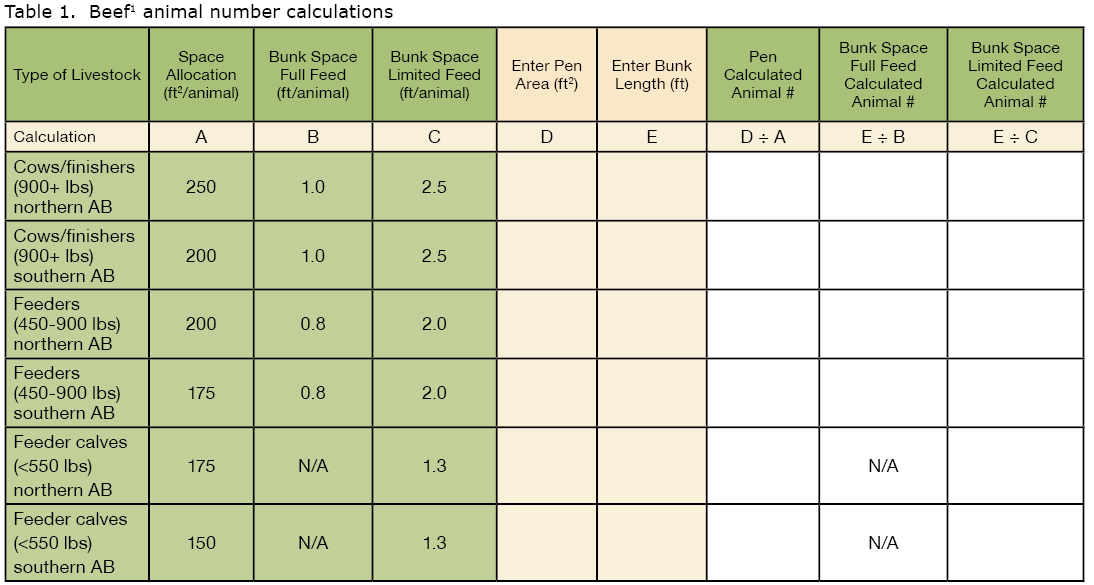
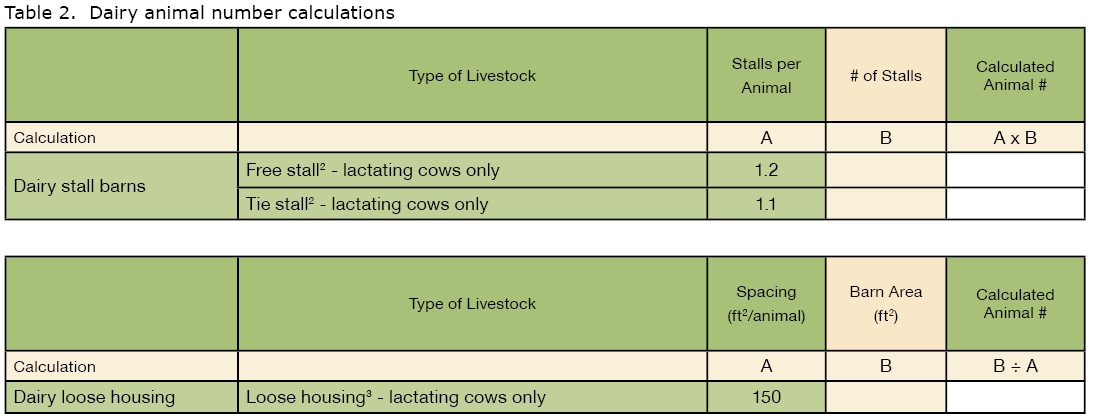
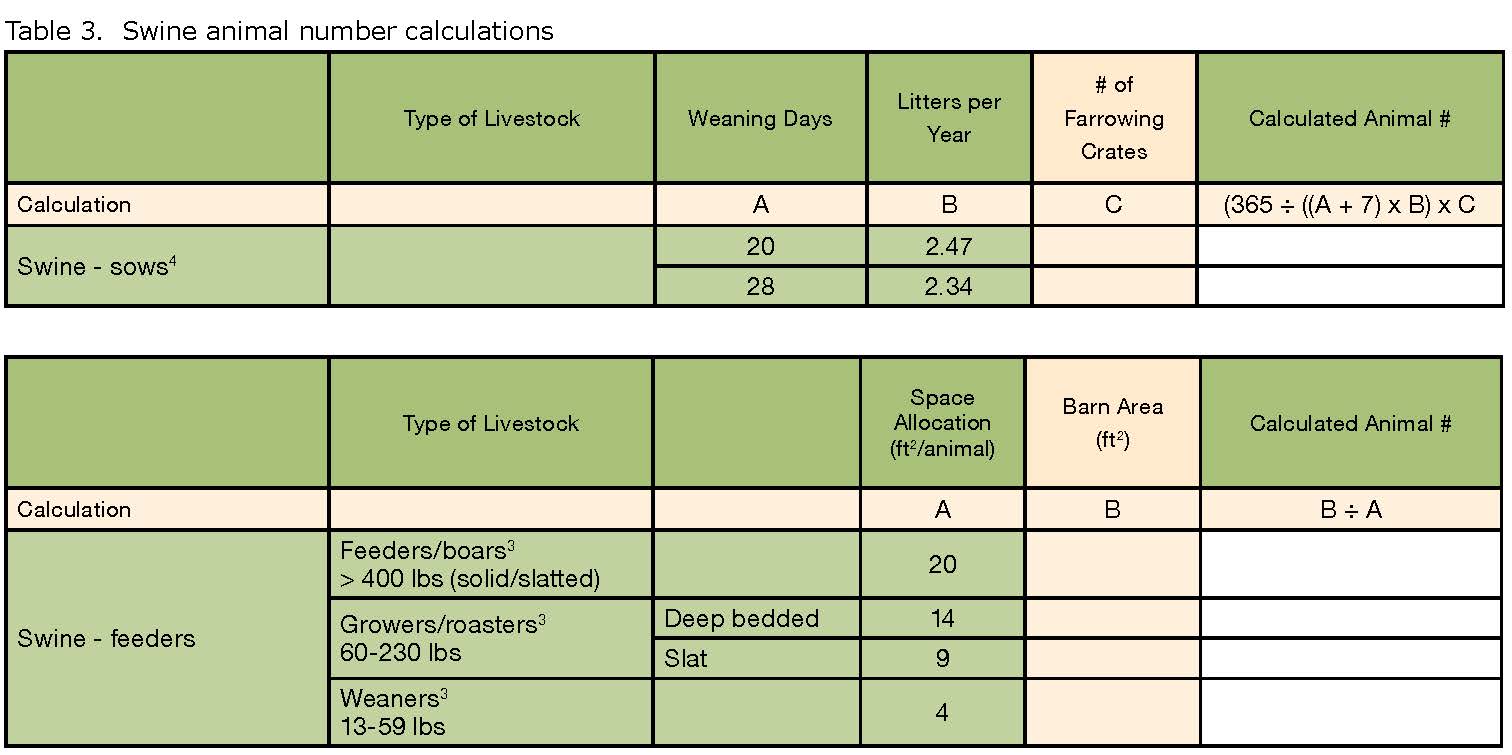
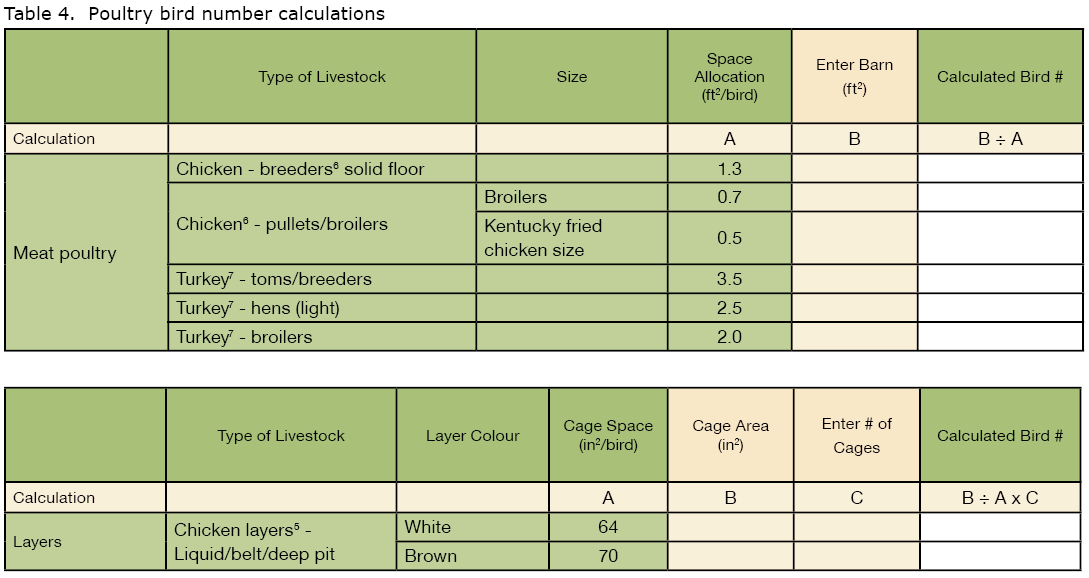
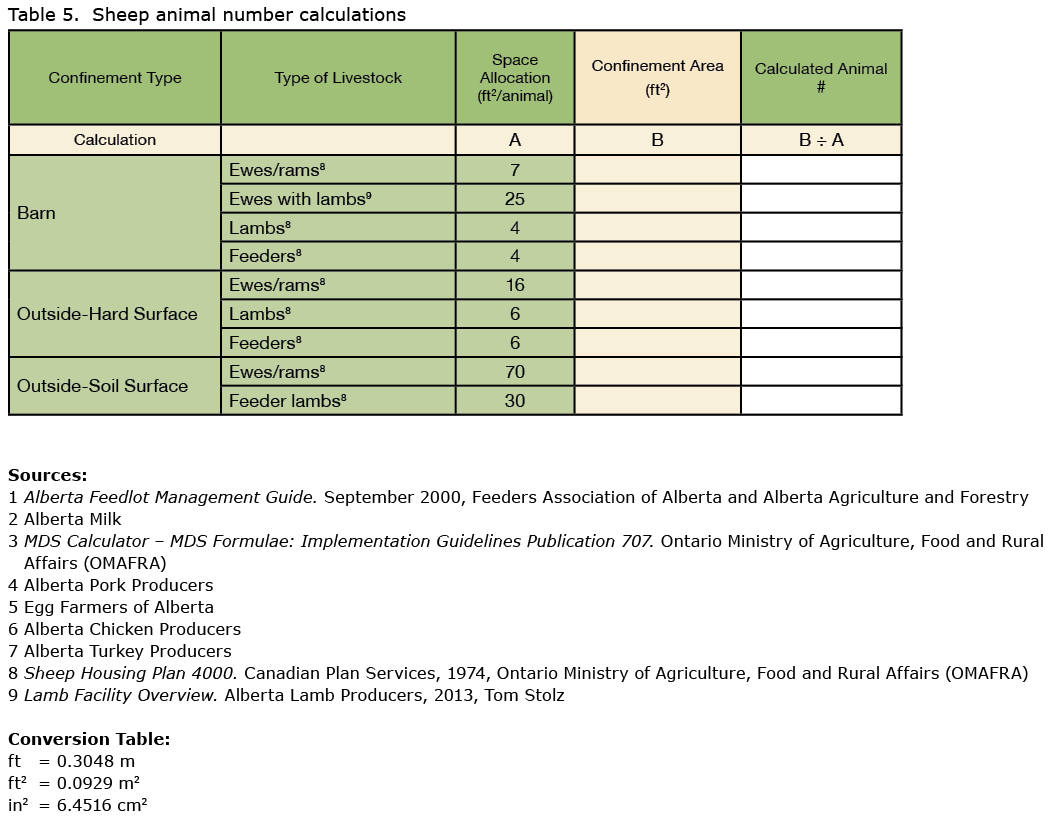
For More Information
Contact your nearest NRCB field office or an AF Agri-Environmental Extension Specialist (dial 310-0000 to be connected toll free)
Alberta Agriculture and Forestry
www.agriculture.alberta.ca/aopa
Ag Info Centre 310 FARM (3276)
Publications (780) 427-0391
Natural Resources Conservation Board
www.nrcb.ca
Fairview - closed, please contact Morinville.
Morinville (780) 939-1212
Red Deer (403) 340-5241
Lethbridge (403) 381-5166
This guideline was developed by the Technical Advisory Group, a partnership between Agriculture and Forestry, the Natural Resources Conservation Board and the agricultural industry.
Source: Agdex 096-81. February 2016. |